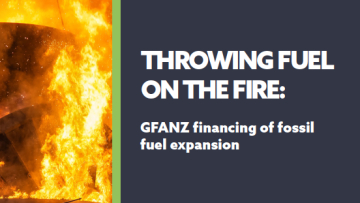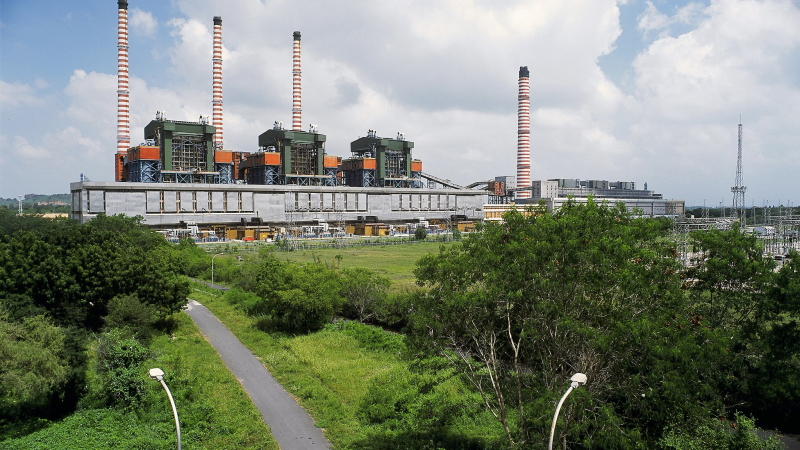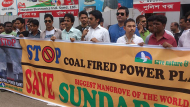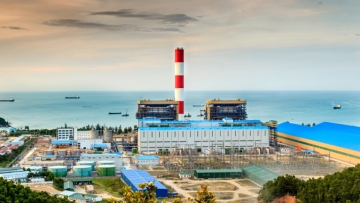
Company – On record
This profile is no longer actively maintained, with the information now possibly out of date
Company – On record
This profile is no longer actively maintained, with the information now possibly out of dateWhy this profile?
India’s National Thermal Power Corporation (NTPC) is the world’s largest coal plant developer, and is planning to build over 38,000 MW of new coal capacity in India and Bangladesh. In terms of emitting CO2, the adverse impacts on people and the environment of this new fossil fuels infrastructure and the impacts on climate change, NTPC's plans are completely at odds with the Paris Agreement Climate goal which calls for a maximum to global temperature rises of 1.5C.
What must happen
Private and public banks, as well as other institutional shareholders must raise concerns about various NTPC projects, particularly the Rampal power plant planned at the edge of the Sundarbans forest in Bangladesh.
| Sectors | Coal Electric Power Generation, Coal Mining, Hydroelectric Power Generation, Wind Electric Power Generation |
| Headquarters |
|
| Ownership |
listed on Bombay Stock Exchange
The Government of India holds 61.77% of the company's equity. NTPC's complete share holder structure can be viewed here. |
| Subsidiaries |
|
| Website | http://www.ntpc.co.in |
The National Thermal Power Corporation (NTPC), founded in 1975, is the largest electricity producer of India. The installed capacity of NTPC is 53,651 MW (including 7,551 MW through Joint Ventures and Subsidiaries) comprising of 51 NTPC stations (21 coal power plants, 7 combined cycle gas/liquid fuel based stations, 2 hydro based station, 1 wind based station), 9 joint venture stations (8 coal power plants and one gas based) and 12 renewable energy projects. The company is aiming to attain a total installed capacity of 130 GW by 2032.
Social and human rights impacts
NTPC is taking part (50%) in BIFPL, a joint venture to develop the Rampal coal power plant. The project will cause irreparable damage to the livelihoods of two million inhabitants living in and around the Sundarbans and depending wholly or partly on the forest for subsistence.
NTPC is at the center of many human rights violation cases, most notably mercury poisoning that killed thousands of children and left many invalid. NTPC also displaces communities in violent, deceiving and corruption laden precess.
In fact-finding missions by both South Asians for Human Rights both and Transparancy International Bangladesh, instances of forced displacement, corruption and human rights violation were reported in connection with the construction of the Rampal plant. Intense and ongoing local and national opposition to the project continues.
Environmental and climate impacts
NTPC has had a bad record of managing its ash. A 2015 report of the Central Electricity Authority (CEA) concluded that17 plants of NTPC generated 59 million tons of ash, but could utilise only 39%. Additionally, NTPC has been illegally disposing of waste water several times, as shown in this study.
The serious destructive impacts the Rampal plant will bring to the Sundarbans has already pushed some major institutions to avoid the project. Three large French banks have already publicly precluded investments in Rampal. Similarly, the Norwegian Government Pension Fund Global (GPFG) excluded NTPC from their investment portfolio on recommendation of its Council of Ethics, stating "there is an unacceptable risk that NTPC will contribute to severe environmental damage through the building and operation of the power plant at Rampal, including related transportation services".
Other impacts
NTPC has often been invovled is issues of corruption in India and when working on power projects abroad, like in Sri Lanka. Since April 2016, NTPC, along with other power companies, are being investigated for over-invoicing coal imports.
From 2014 to 2017 26 financial institutions loaned a total of USD 3.219 billion and provided underwriting services totalling USD 9.237 billion to NTPC. The banks and other FIs involved are specified below.





